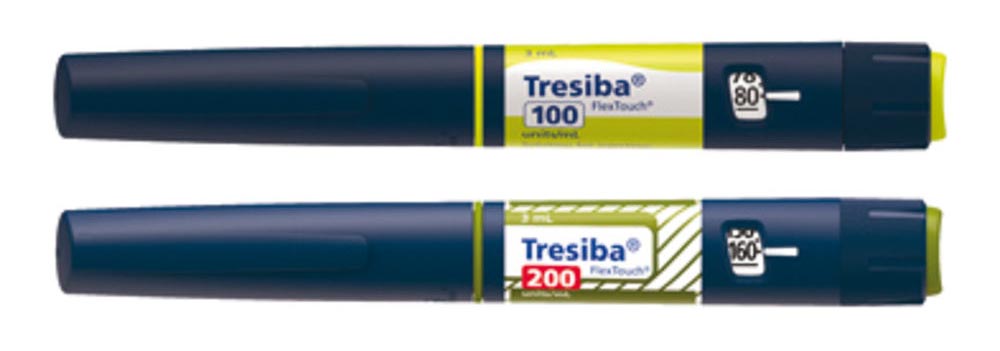In April there was big news as Sanofi’s long-acting Toujeo U300 insulin was added to the Pharmaceutical Benefits Scheme (PBS) and thus became accessible to many people. It had received TGA approval some time beforehand and was available under private prescription, but the cost was significant. But at the time I failed to mention another new long-acting insulin that received TGA approval in March.
This was Novo’s Tresiba. It is not yet on the PBS (and it’s hard to predict when or if it will be). In fact it might turn out to not be available at all even on private prescription (it sometimes happens that a drug company gets regulatory approval but then decides not to supply it for commercial reasons).
We might not know for a while if Tresiba is actually going to be supplied to Australia.
I’m not likely to want to use this myself (as a pump user my basal insulin needs are supplied by the pump instead of daily injections of long-acting insulin) but Tresiba does have some interesting features.
Tresiba (insulin degludec) is intended for once-per-day injection, and is supplied in three formats:
- A pre-filled pen with 3ml of U100 insulin. Doses can be dialled up to the nearest unit.
- A pre-filled pen with 3ml of U200 insulin. Doses can be dialled up to the nearest even-numbered unit dose.
- A 3ml PenFill cartridge of U100 insulin to load into any of the Novo pens (some of which can dose to the nearest 0.5 units).
Unlike the difference in action between insulin glargine U100 (Lantus) and U300 (Toujeo) [see my earlier article for a discussion] there doesn’t seem to be a difference in action between Tresiba U100 and U200. It seems the more-concentrated form just means a smaller injection and thus better for those people using large doses.
Like Toujeo the activity profile of Tresiba is supposed to be fairly flat, reaching out to 40+ hours (the overlap with the next day’s injection is intentional). Definitely longer than Novo’s current Levemir insulin, which is often injected twice a day to avoid peaks and troughs in the basal insulin. Interestingly in the US Novo seems to be marketing and comparing Tresiba in competition to Sanofi’s Lantus, rather than the newer Toujeo.
8 weeks
I haven’t seen the full details of the TGA approval, but it’s interesting to see that in the US (where Tresiba has been available for several years) it’s approved to be safe for up to 8 weeks after being opened or removed from the refrigerator (as long as it doesn’t go above 30˚C). All the other insulins we use at the moment are only rated for 4 weeks out of the fridge.
Speed of delivery
Do note that the pre-filled Tresiba pens are Novo’s FlexTouch model. These are a design that after you’ve dialled up the required dose, when you press the button (usually with your thumb) the pen will inject the whole dose via its spring-loaded action. This is similar to the old AutoPen 24 for Lantus, and is not a feature I liked with MDI. I much preferred pens where I could control the speed of delivery by gradually pushing down on the button. Especially with basal insulins where the doses are usually relatively large compared to quick-acting insulin boluses.
If I was using Tresiba I would be looking to use the PenFill cartridges and a NovoPen. But maybe that’s just me.
Why new insulins?
Hopefully a new insulin will have some compelling medical benefit for your diabetes, but the insulin manufacturers do also have other reasons for producing them.
For example, the timing of Toujeo being introduced as an upgrade for Lantus suspiciously aligns with Sanofi’s patent on Lantus expiring. Thus it roughly coincided with the introduction of Basaglar (which is Lilly’s copy of Sanofi’s Lantus). Basaglar is not available in Australia (we do have Lantus) but it is out there in the world.
Tresiba was introduced around the same time. Who’s willing to bet that Novo’s patent on their long-acting Levemir insulin is also running out?
Incidentally, the patent on Eli Lilly’s Humalog insulin is also about to expire, so keep an eye out for announcements of a new fast-acting insulin from Eli Lilly…

